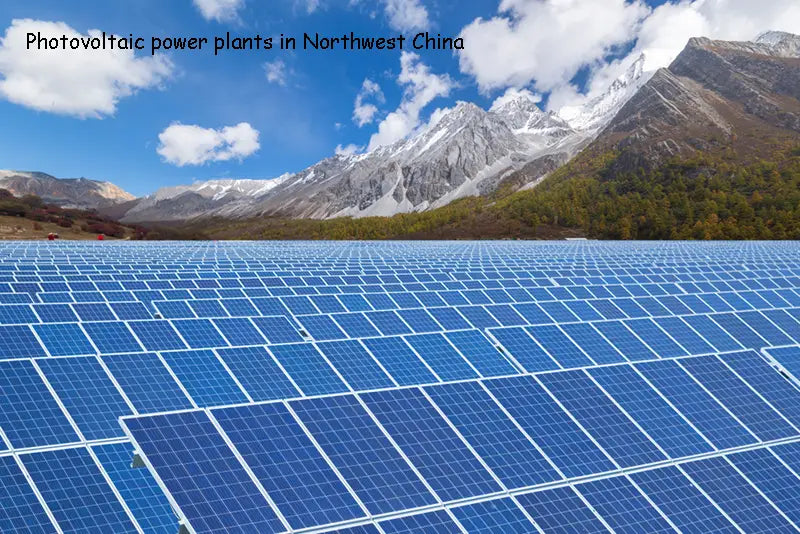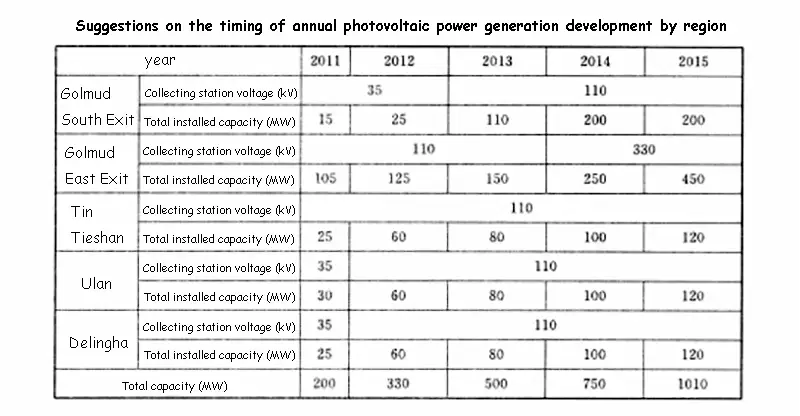
The proportion of industrial load of photovoltaic power generation is too large, so that the daily load of Qinghai power grid has no fixed regularity, and the double-peak characteristics of the development sequence are not obvious. The distribution of valley load and peak load in the development sequence of photovoltaic power generation is relatively scattered. The development sequence of low valley load occurs between 23:00 and 5:00, while 90% of the peak load development sequence is distributed in two periods, a small part occurs between 12:00-13:00, and most appear between 18:00-22:00.
The output of the photovoltaic power station can be regarded as a negative load, and the impact of the development sequence on the peak-to-valley difference and the peak-to-valley difference rate of Qinghai power grid is analyzed by the equivalent load superimposed with the original load. Since the output time of photovoltaic power plants is concentrated between 6:00-18:00, and the trough and peak of the original load of photovoltaic power generation mainly occur in the early morning and at night, the ratio of photovoltaic installation capacity to the maximum load of the system is relatively small and less than 10% When the PV power station is connected, the equivalent peak-to-valley difference rate of the system is not affected, and it basically has no effect on the peak regulation of the system. With the increase of the penetration power of the photovoltaic power station, the peak-to-valley difference rate of Qinghai power grid will increase linearly, and the peak regulation of the system will become more and more difficult. At the maximum daily output of the photovoltaic power station, between 12:00 and 15:00 when the development sequence is concentrated, the northwest wind power The probability of large output operation on the field is also relatively large, reaching 29.51%, which is far greater than the probability of occurrence of low-valley load (4.92% between 2:00 and 5:00), that is, wind power and photovoltaics in the northwest region achieve large output operation at the same time The probability of power failure is high, and sometimes it will become a load between 12:00 and 15:00. After superimposing wind power and photovoltaic output, it will become a low-valley load, increasing the peak-to-valley difference of the power grid, and increasing the difficulty of peak regulation of the information network.

There is a large-scale wind power development plan in the northwest region, which requires the entire network to balance the development sequence. The planned installed wind power capacity in the northwest region in 2010 and 2015 is 7158MW and 16260MW respectively. The difference rate reached 32% and 41.5% respectively. In the 200MW plan in 2010, the PV-to-grid equivalent peak-to-valley difference ratio was small, with a maximum increase of only 0.5%, while the 3,200MW plan for photovoltaic access in 2015 increased the equivalent peak-to-valley difference rate by a maximum of 7%.
In 2010, in addition to the planned wind power installed capacity, the northwest region also had remaining peak shaving capacity that could be used to balance the output fluctuation of photovoltaic power generation. It was feasible to accept the planned 200MW photovoltaic power generation. The power grid has encountered difficulties in insufficient peak shaving capacity, and the peak shaving capacity gap has reached 1756-2156MW. When considering the adoption of volatile photovoltaic power generation, the difficulty of peak regulation of the power grid should not be increased as much as possible. Considering the impact of photovoltaic power generation on Qinghai Power Grid and Northwest Power Grid, it is recommended that the photovoltaic power generation capacity of Qinghai Province should not exceed 1010MW in 2015, so that the maximum peak-to-valley difference rate of Qinghai Power Grid will not increase after photovoltaic access, while the Northwest Power Grid has the largest The peak-to-valley difference rate increment is not more than 0.55.

Youbei Power Grid (including Xinjiang) needs to improve the entire system by improving the power regulation capacity of hydropower/thermal power, expanding the acceptance range of wind power/photovoltaic power generation, carrying out power prediction of wind farm/photovoltaic power station, and strengthening the control ability of wind farm/photovoltaic power station. Peak shaving capacity to cope with the impact of large-scale wind power/photovoltaic access on grid peak shaving, and the maximum load and load characteristics throughout the year. The installed capacity and output characteristics of conventional power sources are the key boundary conditions for determining the peak shaving capacity of the power grid. If the load level and the installed capacity of conventional power sources cannot reach the predicted values, the capacity of the power grid will be affected. The wind power planning in the northwest region is also a key factor affecting the photovoltaic capacity of Qinghai power grid. The development sequence of each region and sub-year is shown in the figure below.
















